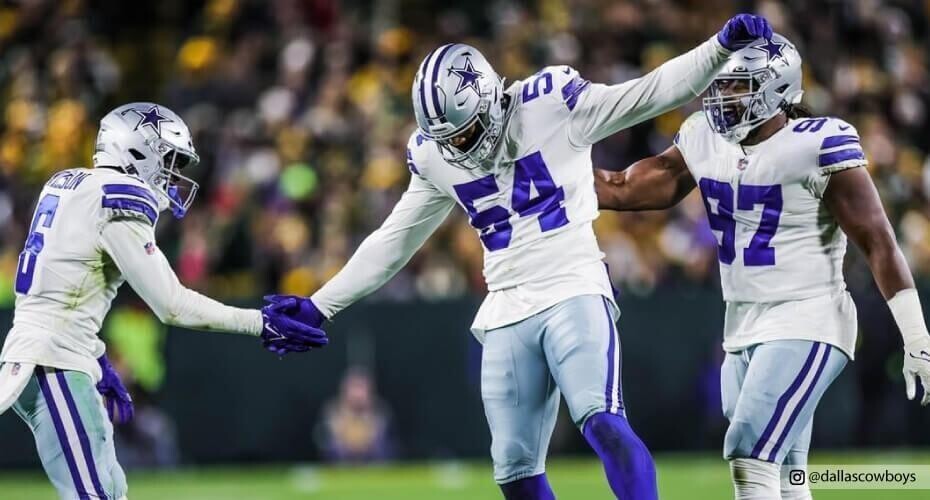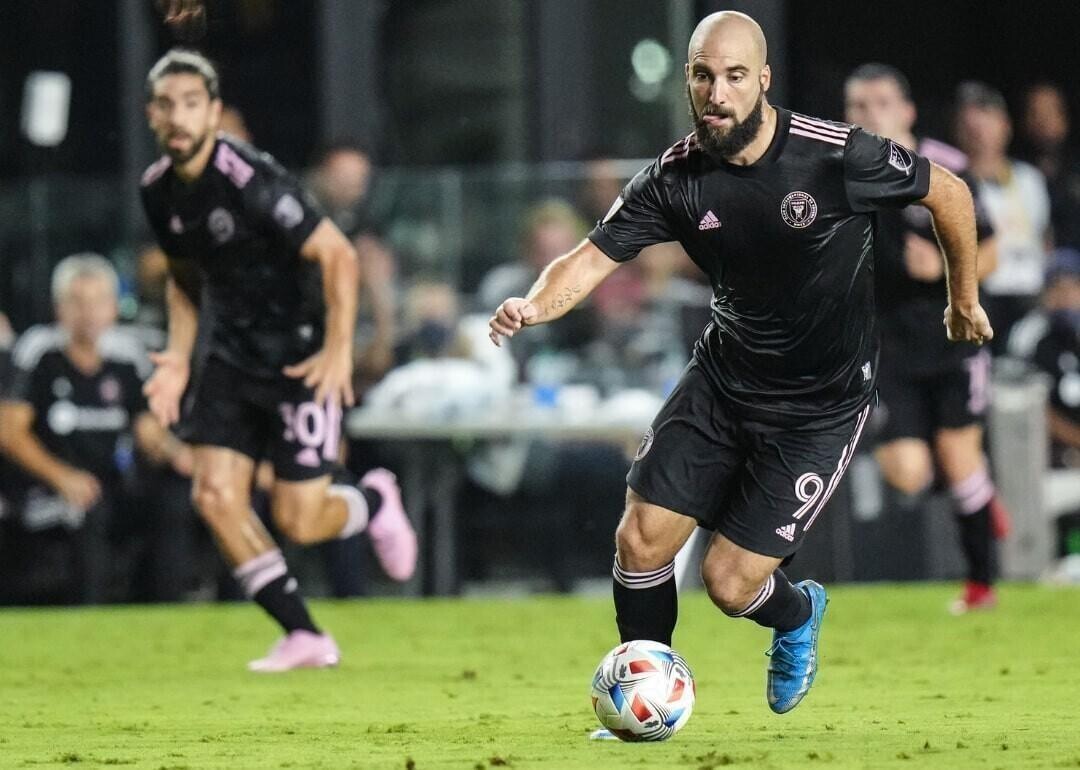
Your data guide to football betting, Dan Tracey shows you where the numbers point before the market catches up.
Whereas the English sporting landscape is rather settled, that is not the case in North America. Franchises operate instead of teams and these outfits can be wound down or relocated at a moment’s notice.
No matter how much support you have put into your favourite basketball, football, or baseball franchise. They could just as easily fail to exist in an instant or perhaps worse, they could move on to a whole new city.
That is the negative aspect when it comes to sporting franchises in North America but there is perhaps a positive as well. One that comes in the shape of expansion teams, as the leagues look to enter new frontiers.
Because the likes of the NFL, MLB and NHL like to cover a wide a footprint as possible and this means new franchises have been formed as the competitions in question become closet to global juggernauts.
But what does expansion mean in terms of financial viability? It is certainly not cheap to add new franchises and such an act would not be carried out if the overall intention was not to create more revenue for the league in question.

At the same time, these same leagues have to be careful not to stretch themselves too thin. If you expand too quickly, the monetary pie is spread out across too many mouths and the talent pool of players can also become diluted.
This means each major North American sporting league needs to operate with what they consider an optimum number of franchises at any one time. But what is an optimum number and does expansion also create overall benefits?
That is something we are going to look into as we track the size of entrants in these six competitions:
- NFL – American football
- NBA – Basketball
- NHL – Ice hockey
- MLB - Baseball
- MLS – Soccer
- CFL – Canadian football
First, we will look at how these six have grown or reduced in terms of entrant size in the past 41 years:
| Year | NFL | MLB | NBA | NHL | MLS | CFL |
|---|---|---|---|---|---|---|
| 1982 | 28 | 26 | 23 | 21 | 9 | |
| 1983 | 28 | 26 | 23 | 21 | 9 | |
| 1984 | 28 | 26 | 23 | 21 | 9 | |
| 1985 | 28 | 26 | 23 | 21 | 9 | |
| 1986 | 28 | 26 | 23 | 21 | 9 | |
| 1987 | 28 | 26 | 23 | 21 | 8 | |
| 1988 | 28 | 26 | 25 | 21 | 8 | |
| 1989 | 28 | 26 | 27 | 21 | 8 | |
| 1990 | 28 | 26 | 27 | 21 | 8 | |
| 1991 | 28 | 26 | 27 | 22 | 8 | |
| 1992 | 28 | 26 | 27 | 24 | 8 | |
| 1993 | 28 | 28 | 27 | 26 | 9 | |
| 1994 | 28 | 28 | 27 | 26 | 12 | |
| 1995 | 30 | 28 | 29 | 26 | 13 | |
| 1996 | 30 | 28 | 29 | 26 | 10 | 9 |
| 1997 | 30 | 28 | 29 | 26 | 10 | 8 |
| 1998 | 30 | 30 | 29 | 27 | 12 | 8 |
| 1999 | 31 | 30 | 29 | 28 | 12 | 8 |
| 2000 | 31 | 30 | 29 | 30 | 12 | 8 |
| 2001 | 31 | 30 | 29 | 30 | 12 | 8 |
| 2002 | 32 | 30 | 29 | 30 | 10 | 9 |
| 2003 | 32 | 30 | 29 | 30 | 10 | 9 |
| 2004 | 32 | 30 | 30 | 30 | 10 | 9 |
| 2005 | 32 | 30 | 30 | 30 | 12 | 9 |
| 2006 | 32 | 30 | 30 | 30 | 12 | 8 |
| 2007 | 32 | 30 | 30 | 30 | 13 | 8 |
| 2008 | 32 | 30 | 30 | 30 | 14 | 8 |
| 2009 | 32 | 30 | 30 | 30 | 15 | 8 |
| 2010 | 32 | 30 | 30 | 30 | 16 | 8 |
| 2011 | 32 | 30 | 30 | 30 | 18 | 8 |
| 2012 | 32 | 30 | 30 | 30 | 19 | 8 |
| 2013 | 32 | 30 | 30 | 30 | 19 | 8 |
| 2014 | 32 | 30 | 30 | 30 | 19 | 9 |
| 2015 | 32 | 30 | 30 | 30 | 20 | 9 |
| 2016 | 32 | 30 | 30 | 31 | 20 | 9 |
| 2017 | 32 | 30 | 30 | 31 | 22 | 9 |
| 2018 | 32 | 30 | 30 | 31 | 23 | 9 |
| 2019 | 32 | 30 | 30 | 31 | 24 | 9 |
| 2020 | 32 | 30 | 30 | 31 | 26 | 9 |
| 2021 | 32 | 30 | 30 | 32 | 27 | 9 |
| 2022 | 32 | 30 | 30 | 32 | 28 | 9 |
| 2023 | 32 | 30 | 30 | 32 | 29 | 9 |
Since 1982, the NFL has added four more franchises to get from 28 to 32, MLB has done the same to get from 26 to 30 and then NBA also now operates with 30 franchises. However, this competition has grown by nearly 25% during this time span.
Just 23 franchises were in operation in 1982, that figure has grown by seven and it is one short of the NHL’s 31. Another league that has consistently found new frontiers on both sides of the Canadian border. Only 21 franchises played the 1982 season, it now stands at 10 more than that.
While 10 was the starting number for the MLS in 1996 and just two years later that number would expand to 12. However, early growing pains for professional soccer in North America would see that number contract in 2002.

Fairytale Major League Franchises
Two franchises lost by the wayside and genuine fears that the competition could face financial ruin. Thankfully, the downsizing can only be considered a smart move, as now there are 29 soccer franchises competing in the MLS and that number is still yet to increase in the next few years.
10 is the magic number in the CFL or at least they hope it will be. For years the Canadian version of gridiron has been stuck on nine franchises, as the search for a double-figured location continues without success.
However, the CFL did operate with bigger numbers in the past and with 13 being its high point in 1995 such a return looks rather unrealistic. If only because the league welcomed teams from America during the mid-90’s and these franchises have long since dissipated.
Not only that, but with the XFL and the return of the USFL and market which is yet to have a major football team in residence is unlikely to want to compete in Canada now that nascent competitions are much closer to home.
Now that we know the size of expansion across the past 41 years, lets see how it has impacted television revenue and first, we will look at the ballooning of NFL deals during this timeframe:
| Period | AFC Package | NFC Package | Sunday Night | Monday Night | Thursday Night | Sunday Ticket | Total Amount |
|---|---|---|---|---|---|---|---|
| 1982–1986 | NBC ($107m) | CBS ($120m) | — | ABC ($115m) | ABC | — | $420m |
| 1987–1989 | NBC ($135m) | CBS ($165m) | ESPN (2nd half) ($51m) | ABC ($125m) | ABC | $473m | |
| 1990–1993 | NBC ($188m) | CBS ($265m) | TNT (1st half) ($111m) ESPN (2nd half) ($111m) | ABC ($225m) | ABC | $900m | |
| 1994–1997 | NBC ($217m) | Fox ($395m) | TNT (1st half) ($124m) ESPN (2nd half) ($131m) | ABC ($230m) | ESPN | DirecTV | $1,100m |
| 1998–2005 | CBS ($500m) | Fox ($550m) | ESPN ($600m) | ABC ($550m) | ESPN | DirecTV ($400m) | $2,200m |
| 2006–2010 | CBS ($622.5m) | Fox ($712.5m) | NBC ($650m) | ESPN ESPN Deportes ($1,100m) | NFL Network (2nd half) ($0m) | DirecTV ($700m) | $3,085m |
| 2011–2013 | DirecTV ($1,000m) | ||||||
| 2014 | CBS CBS All-Access ($1,000m) | Fox Fox Deportes ($1,100m) | NBC Universo ($950m) | ESPN ESPN Deportes ($1,900m) | NFL Network ($0m) CBS (8 weeks, $275m) | >$5,000m | |
| 2015 | DirecTV ($1,500m) | ||||||
| 2016–2017 | NFL Network ($0m) NBC (5 weeks (2016m), 6 weeks (2017m), $225m) CBS (5 weeks, $225m) Twitter (2016 only, 10 weeks, $10m) Amazon Prime Video (2017 only, 11 weeks, $50m) | ||||||
| 2018–2021 | NFL Network ($0m) Fox (11 weeks, $660m) Prime Video/Twitch (2018-2019 only, 11 weeks, $65; 2020-2022 only, 12 weeks, $65m) | ||||||
| 2022 | ESPN ESPN Deportes ABC ESPN+ ($2,700m) | Prime Video/Twitch ($1,000m) | |||||
| 2023–2033 | CBS Paramount+ ($2,100m) | Fox Fox Deportes Tubi ($2,200m) | NBC Universo Peacock ($2,000m) | YouTube TV ($2000m) | >$12,000m |
Between 1982 and 1986 the three main networks all had a slice of American football action in their portfolio’s and when added together, the overall payments to the NFL were $420m in total. Fast forward to the current deal and the overall value has almost trebled.
More media players in the market has undoubtedly created a bidding war and it is the NFL that have won big. What was a $420m overall television rights deal has now grown to over $12bn and networks are now prepared to pay in excess of $2m to get only a part of the deal.
For example, $2bn does not get you exclusive coverage of the NFL for the next 10 years, instead it gets you the Sunday night game each week. A mind-blowing amount of money for just a segment of the competition.
But what happens when we track these growth figures against expansion of the NFL:
| Year | NFL | Value | Growth |
|---|---|---|---|
| 1982 | 28 | $420m | |
| 1983 | 28 | $420m | |
| 1984 | 28 | $420m | |
| 1985 | 28 | $420m | |
| 1986 | 28 | $420m | |
| 1987 | 28 | $473m | |
| 1988 | 28 | $473m | |
| 1989 | 28 | $473m | |
| 1990 | 28 | $900m | |
| 1991 | 28 | $900m | |
| 1992 | 28 | $900m | |
| 1993 | 28 | $900m | |
| 1994 | 28 | $1,100m | |
| 1995 | 30 | $1,100m | Expansion |
| 1996 | 30 | $1,100m | |
| 1997 | 30 | $1,100m | |
| 1998 | 30 | $2,200m | |
| 1999 | 31 | $2,200m | Expansion |
| 2000 | 31 | $2,200m | |
| 2001 | 31 | $2,200m | |
| 2002 | 32 | $2,200m | Expansion |
| 2003 | 32 | $2,200m | |
| 2004 | 32 | $2,200m | |
| 2005 | 32 | $2,200m | |
| 2006 | 32 | $3,085m | |
| 2007 | 32 | $3,085m | |
| 2008 | 32 | $3,085m | |
| 2009 | 32 | $3,085m | |
| 2010 | 32 | $3,085m | |
| 2011 | 32 | $3,085m | |
| 2012 | 32 | $3,085m | |
| 2013 | 32 | $3,085m | |
| 2014 | 32 | $5,000m | |
| 2015 | 32 | $5,000m | |
| 2016 | 32 | $5,000m | |
| 2017 | 32 | $5,000m | |
| 2018 | 32 | $5,000m | |
| 2019 | 32 | $5,000m | |
| 2020 | 32 | $5,000m | |
| 2021 | 32 | $5,000m | |
| 2022 | 32 | $5,000m | |
| 2023 | 32 | $12,000m |

Where could pro sports expand next? 12 cities that are ripe for new teams
The first phase of the NFL’S expansion in the past 41 years was in 1995 and after expanding from 28 to 30 franchises, there was not a direct lift in television revenue. However, the year before did see a $200m increase in overall rights from $900m to $1.1bn.
A figure that would double just four years later and it would only need an additional franchise in the NFL to get there. For 30 franchises read $1.1bn, for 31 read $2.2bn. While this new worth was also in place by the time a 32nd entrant joined in 2002.
However, in the 21 years that have followed, that $2.2bn has become more than $12bn. More than a five-fold increase in rights values in just over two decades. The question now is whether the NFL wants to expand further and finally operate in London

An NFL Franchise In London - American Football In The UK
Here we can see that expansion has had a direct positive effect on the value of media rights and the same can also be said when it comes to the MLS. Especially as the ink is only just drying on their new deal with Apple TV.
A deal that is worth no less than $2.5bn over the next decade and with an annual fee of US$250 million it far surpasses its previous agreement with ESPN/ABC, Fox, and Univision, which was valued at US$90 million per season.
It is an improvement on the previous deal and a stark contrast to when the MLS first got underway. Back then it was not even receiving a rights fee from its partner, it simply wanted eyeballs on the product.

But this is deal does raise a question in terms of the dreaded paywall, just as the MLS is at its strongest, it is now putting a considerable number of fixtures under financial lock and key and this is always a difficult balancing act.
Not only that, but the deal runs way past the 2026 World Cup and if there is the expected swell of post-tournament interest, the MLS cannot pounce on it with immediate effect. Which begs the question as to whether they have sold their crown jewel too early.
Time will tell over the next three or four years but it is fair to say that expansion has certainly helped the MLS gain a national and international footprint and it has also seen a considerable rise in rights deals – especially when it was free to partners in 1995.
If the MLS has profited from expansion than can the same be said about its baseball cousin? If we look at the size of the TV deals since 1983 we can get a pretty good idea.
| Year | Network | Value Per Year | Teams | Status |
|---|---|---|---|---|
| 1983 | NBC, ABC | $20m | 26 | |
| 1984 | NBC, ABC | $126m | 26 | |
| 1985 | NBC, ABC | $136m | 26 | |
| 1986 | NBC, ABC | $141m | 26 | |
| 1987 | NBC, ABC | $171m | 26 | |
| 1988 | NBC, ABC | $186m | 26 | |
| 1989 | NBC, ABC | $231m | 26 | |
| 1990 | CBS | $450m | 26 | |
| 1991 | CBS | $450m | 26 | |
| 1992 | CBS | $450m | 26 | |
| 1993 | CBS | $450m | 28 | Expansion |
| 1994 | IN HOUSE | no values | 28 | |
| 1995 | IN HOUSE | no values | 28 | |
| 1996 | FOX, NBC | $195m | 28 | |
| 1997 | FOX, NBC | $195m | 28 | |
| 1998 | FOX, NBC | $195m | 30 | Expansion |
| 1999 | FOX, NBC | $195m | 30 | |
| 2000 | FOX, NBC, ESPN | $336m | 30 | |
| 2001 | FOX, ESPN | $557m | 30 | |
| 2002 | FOX, ESPN | $557m | 30 | |
| 2003 | FOX, ESPN | $557m | 30 | |
| 2004 | FOX, ESPN | $557m | 30 | |
| 2005 | FOX, ESPN | $557m | 30 | |
| 2006 | FOX, ESPN | $689m | 30 | |
| 2007 | ESPN, TURNER | $293.5m + unreported Turner deal value | 30 | |
| 2008 | ESPN, TURNER | $293.5m + unreported Turner deal value | 30 | |
| 2009 | ESPN, TURNER | $293.5m + unreported Turner deal value | 30 | |
| 2010 | ESPN, TURNER | $293.5m + unreported Turner deal value | 30 | |
| 2011 | ESPN, TURNER | $308.5m + unreported Turner deal value | 30 | |
| 2012 | ESPN, TURNER | $306m + unreported Turner deal value | 30 | |
| 2013 | FOX, TURNER | $800m | 30 | |
| 2014 | FOX, TURNER | $800m | 30 | |
| 2015 | FOX, TURNER | $800m | 30 | |
| 2016 | FOX, TURNER | $800m | 30 | |
| 2017 | FOX, TURNER | $800m | 30 | |
| 2018 | FOX, TURNER | $800m | 30 | |
| 2019 | FOX, TURNER | $800m | 30 | |
| 2020 | FOX, TURNER | $800m | 30 | |
| 2021 | FOX, TURNER | $800m | 30 | |
| 2022 | DEALS FRAGMENTED | no values reported | 30 | |
| 2023 | DEALS FRAGMENTED | no values reported | 30 |
The first national tv deal in 1983 saw the NBC and ABC networks pay a $20m advance for that year in isolation. Fast forward nearly 40 years later and a combination of Fox and Turner were paying $800m a year instead.
While perhaps the most important thing to consider here is that there have only been two separate expansion windows since 1983. Two new franchises were added in the last year of the CBS deal in 1993 and by then the deal revenue had grown 22-fold on the first ever payment a decade before.
However, there was a sense that the bubble had temporarily burst in terms of broadcasting rights. CBS run a ground with financial difficulties because of the deal and the MLB had to then take things in house.
The next expansion to 30 franchises saw the value of TV rights in 1998 being less than what was being nine years prior but since the turn of the millennium it is also fair to say that the league has never looked back.
In this instance, expansion has not been a key driver when it comes to growth of the league. With there being so much baseball being played in any one season, it has the ability to fill countless hours of schedule time and that is why the networks are tripping over each other in order to sign deals.

The same regularity can also be mentioned when it comes to the NBA, a punishing 82 game regular season is going to offer plenty of viewing opportunities and with only one expansion round in the past 20 years, this has not been the driver for an influx in rights values.
| Year | National TV Packages | Annual Value | Teams | Status |
|---|---|---|---|---|
| 2003 | ESPN, ABC, TURNER | $766m | 29 | |
| 2004 | ESPN, ABC, TURNER | $766m | 30 | Expansion |
| 2005 | ESPN, ABC, TURNER | $766m | 30 | |
| 2006 | ESPN, ABC, TURNER | $766m | 30 | |
| 2007 | ESPN, ABC, TURNER | $766m | 30 | |
| 2008 | ESPN, ABC, TURNER | $766m | 30 | |
| 2009 | ESPN, ABC, TURNER | $930m | 30 | |
| 2010 | ESPN, ABC, TURNER | $930m | 30 | |
| 2011 | ESPN, ABC, TURNER | $930m | 30 | |
| 2012 | ESPN, ABC, TURNER | $930m | 30 | |
| 2013 | ESPN, ABC, TURNER | $930m | 30 | |
| 2014 | ESPN, ABC, TURNER | $930m | 30 | |
| 2015 | ESPN, ABC, TURNER | $930m | 30 | |
| 2016 | ESPN, ABC, TURNER | $930m | 30 | |
| 2017 | ESPN, ABC, TURNER | $2.7bn | 30 | |
| 2018 | ESPN, ABC, TURNER | $2.7bn | 30 | |
| 2019 | ESPN, ABC, TURNER | $2.7bn | 30 | |
| 2020 | ESPN, ABC, TURNER | $2.7bn | 30 | |
| 2021 | ESPN, ABC, TURNER | $2.7bn | 30 | |
| 2022 | ESPN, ABC, TURNER | $2.7bn | 30 | |
| 2023 | ESPN, ABC, TURNER | $2.7bn | 30 |
Whereas $766m was being forked out by a combination of three networks in 2003, that figure has almost quadrupled in 2023. The current NBA deal between, ESPN, ABC and TURNER is valued at $2.7bn a year and the number of franchises has stayed at 30 since 2004.
This just goes to show that there is a rather insatiable appetite for the NBA but can the same be said for the NHL? In fairness we may have to treat this as a slightly different beast, and this is due to a far greater Canadian influence on the league.
Whereas our examples above – excluding the NFL which does not have a Canadian based franchise, have the odd smattering of Canadian-based franchises, the pinnacle of North American hockey is far different and therefore, broadcasting deals are split across two countries.
This means we do not necessarily have the ability to analyse on the same scale as Canadian broadcasters will be willing to pay more for their own teams in residence and this may distort the overall value picture.
Only since 1995 has national coverage been permitted for the Stanley Cup finals in America. Something that suggests that the sport does not have as symbiotic a relationship with television as the others above.
But there has been regular expansion when it comes to the NHL, and we can take a look at what has also meant for ongoing TV deals:
| Year | Teams | Networks | Annual Rights Value |
|---|---|---|---|
| 1982 | 21 | ESPN | Not disclosed |
| 1991 | 22 | Sports Channel America | $17m |
| 1992 | 24 | Sports Channel America | $5m (one year add on after previous deal) |
| 1993 | 26 | ABC, NBC, ESPN | Not disclosed |
| 1998 | 27 | ABC, NBC, ESPN | Not disclosed |
| 1999 | 28 | ABC, NBC, ESPN | Not disclosed |
| 2000 | 30 | ABC, ESPN, ESPN2 | $120m |
| 2021 to date | 32 | ESPN, TURNER | $625m |
By the time the NHL had increased from 21 to 22 franchises in 1991, the annual rights were worth just $17m. Fast forward to the turn of the millennium and that figure had seen another eight hockey outfits join the ranks.

In addition to this, it also meant that the annual rights had increased to $120m. A combination of the ABC family of networks combined to show all 30 franchises and although the step change in nine years was rather impressive, there was still scope for a further lift.
One that came as recently as 2021 when ESPN and TURNER teamed up to show an NHL that now had 32 franchises taking to the ice each year and each year would receive as much as $625m in annual rights fees.
In this instance it is fair to say that the NHL has certainly benefitted from expansion but the same cannot be said for the CFL. If only because Canadian football’s premier competition is struggling to grow.
Since 1996, the CFL has had a rather fluid number of entrants. Sometimes eight, sometimes nine but never ten. That is viewed as the holy grail but unfortunately the cost of brining in a tenth franchise in proving to be prohibitive.
There is certainly the desire to expand the CFL further but like so many other things, it comes down to money. Not from the networks but more a case of who wants to fund the construction of a new stadium.
How much of a burden do you put on taxpayers? That is the burning question and not one that is being answered anytime soon. Perhaps if the CFL does get a 10th entrant, further expansion may unlock more Canadian dollars from the networks?
Data Sources
The sources and data are correct as of 16th June 2023, fro a range of source on the internet, including but not exclusively
Data taken from these sources
https://en.wikipedia.org/wiki/Expansion_of_the_National_Basketball_Association
https://en.wikipedia.org/wiki/History_of_organizational_changes_in_the_NHL
https://en.wikipedia.org/wiki/Timeline_of_the_National_Football_League
https://en.wikipedia.org/wiki/Expansion_of_Major_League_Soccer
https://en.wikipedia.org/wiki/Timeline_of_Major_League_Baseball
https://en.wikipedia.org/wiki/Canadian_Football_League
https://en.wikipedia.org/wiki/National_Football_League_on_television
https://en.wikipedia.org/wiki/Major_League_Baseball_on_television
https://en.wikipedia.org/wiki/National_Basketball_Association_on_television
https://en.wikipedia.org/wiki/History_of_the_National_Hockey_League_on_United_States_television
https://en.wikipedia.org/wiki/National_Hockey_League_on_television
https://en.wikipedia.org/wiki/Major_League_Soccer_on_television



